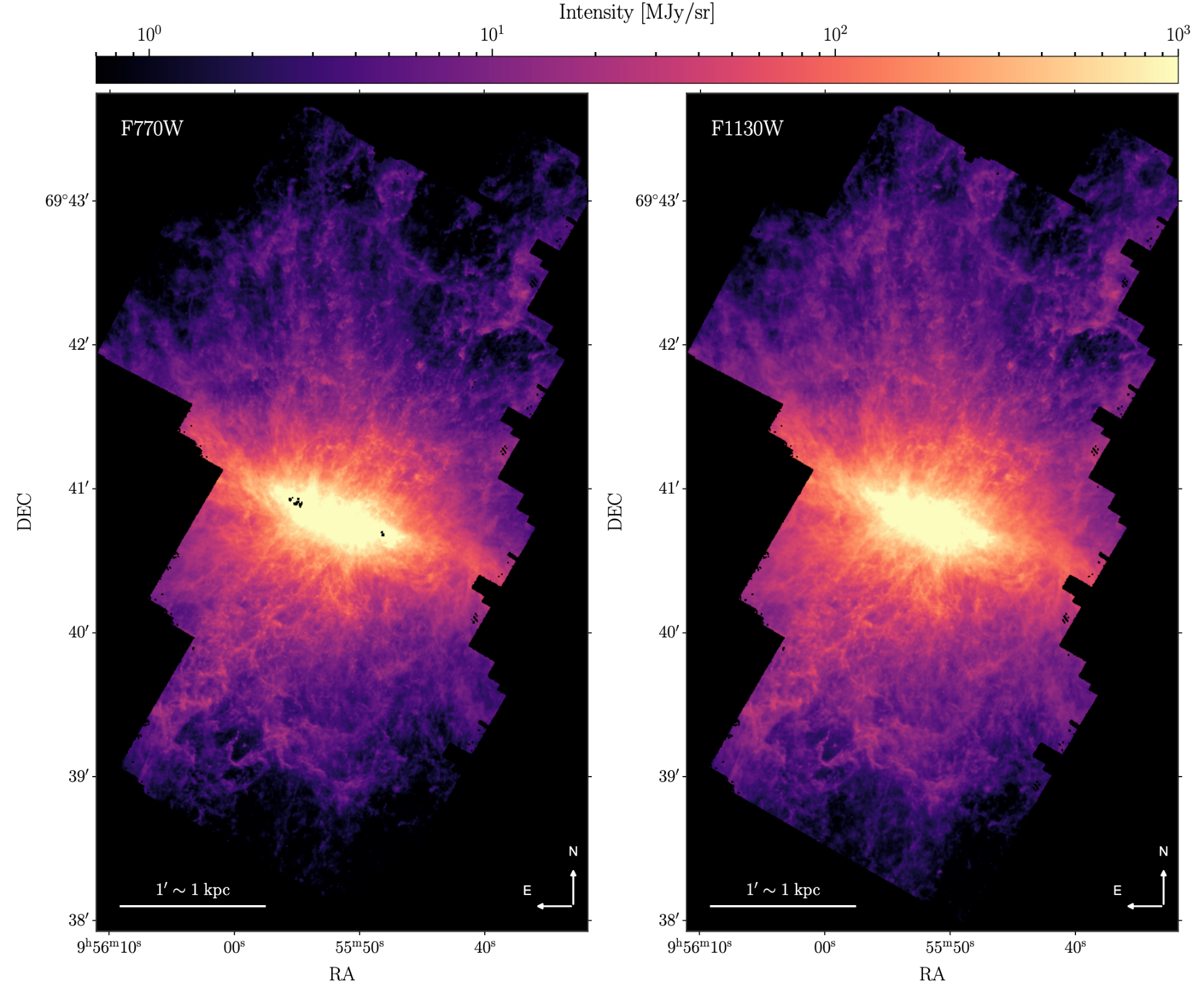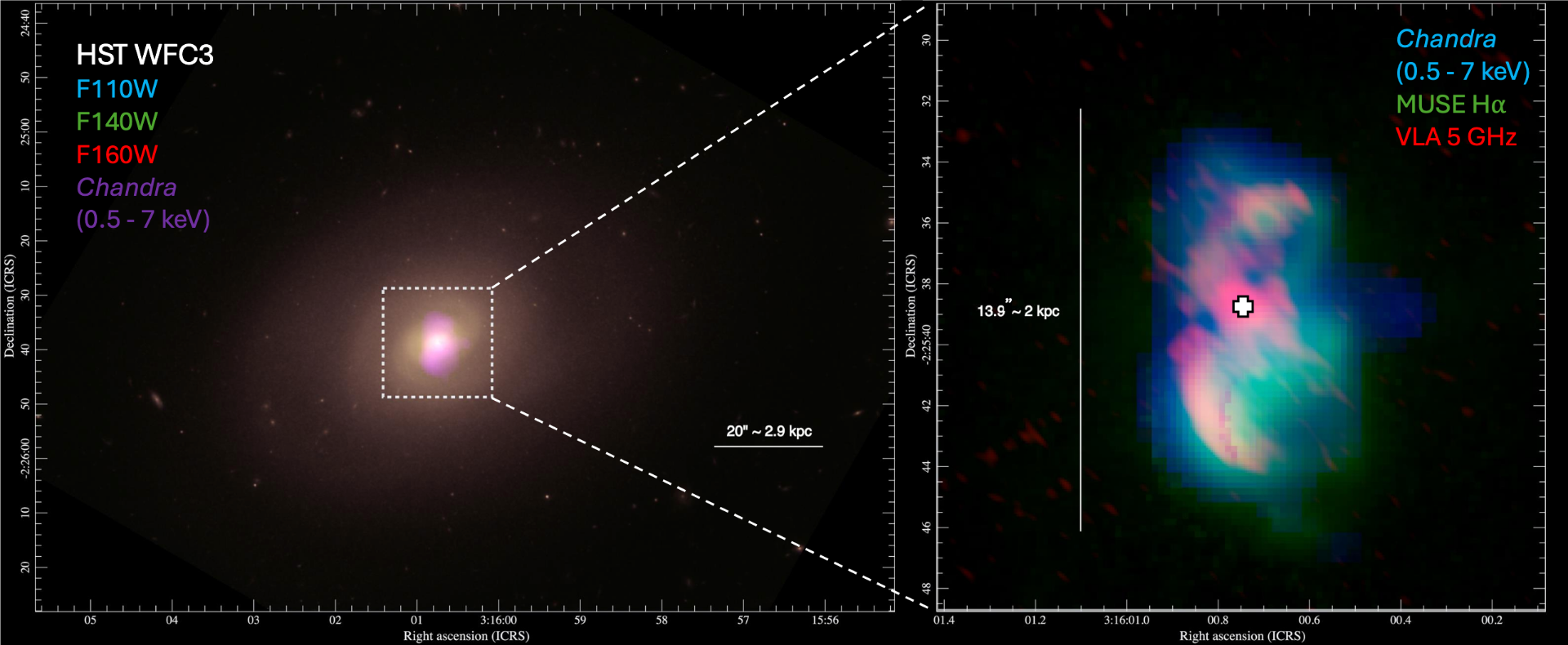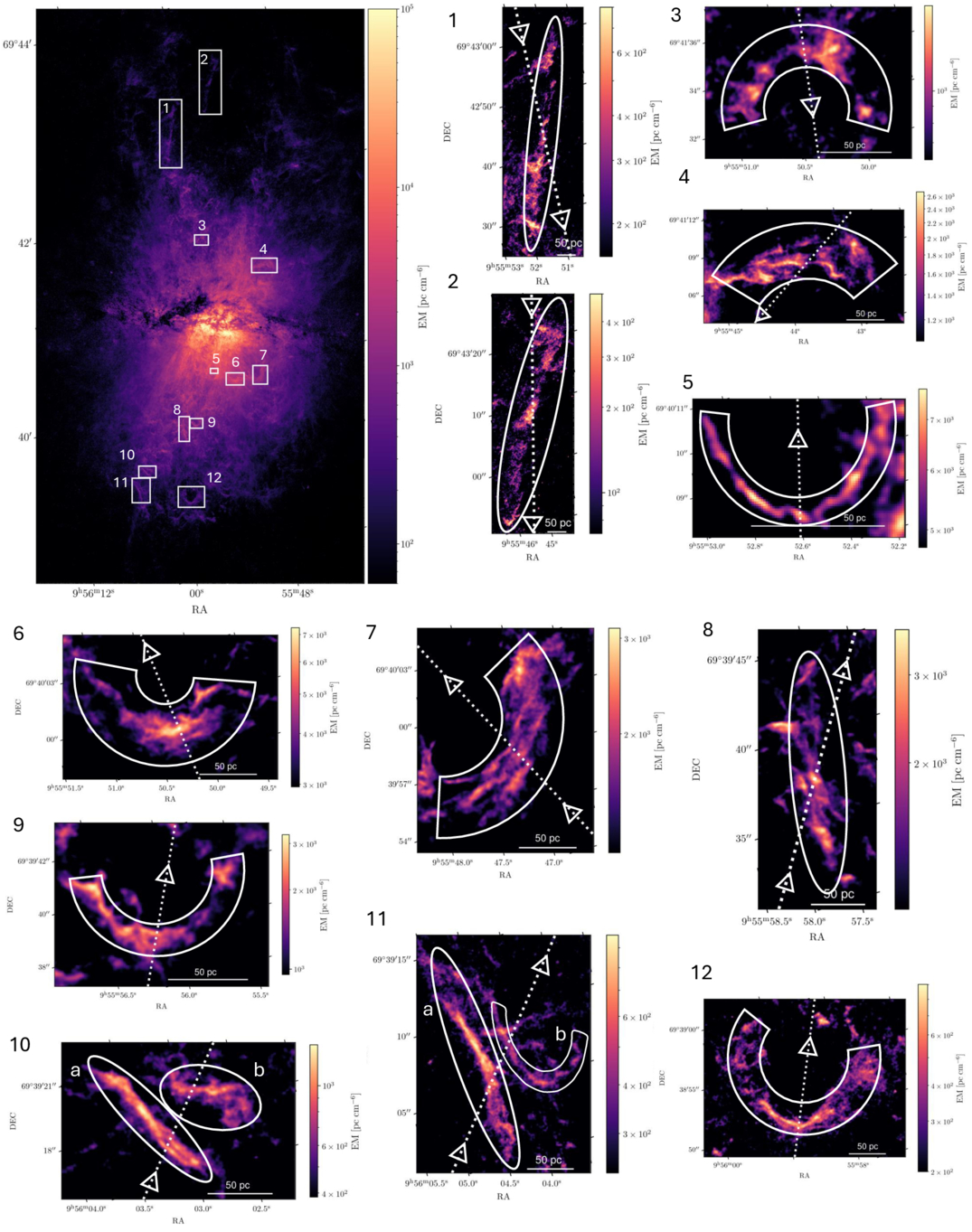
Sebastian Lopez
Astronomy Ph.D. Student at The Ohio State University
Email: slopez.astro@gmail.com or lopez.764@osu.edu
My research mainly focus on galactic feedback. I study the various properties of galactic winds across the whole electromagnetic spectrum with a focus on X-rays. Below you can find my projects as well as more information about myself. Don't hesitate to reach out via email about anything!

Research Projects:
JWST Observations of Starbursts: PAHs Closely Trace the Cool Phase of M82's Galactic Wind

First Author: Sebastian Lopez
Co-authors: Colton Ring, Adam Leroy, Serena Cronin, Alberto Bolatto, Laura Lopez, and 27 other co-authors.
In this project we analyzed new JWST mid-infrared images tracing polycyclic aromatic hydrocarbon (PAH) emission at 7.7 and 11.3~μm from the outflow of the prototypical starburst M82 out to 3.2 kpc. We find that PAH emission correlates well with CO, Hα, and surprisingly, X-ray emission within the outflow, the X-ray correlation disappears past 2 kpc. PAH emission not only correlates strongly with cold molecular gas, but the PAH-CO scaling relation is nearly identical to those in galaxy disks despite the very different conditions! We als found the PAH-to-neutral gas ratio remains nearly flat to 2~kpc, with variations following changes in the radiation field. This implies that PAH abundance and dust-to-gas ratios may not change significantly over the inner portion of the outflow. Together, these results demonstrate that PAHs robustly trace the cold phase of M82's wind and provide a high-resolution proxy for mapping the life cycle of entrained cold material in galactic outflows.
Paper is here: https://ui.adsabs.harvard.edu/abs/2025arXiv251001314L/abstract
The Spatially Resolved Hot Gas Properties of NGC 1266's AGN-Driven Outflow

First Author: Sebastian Lopez
Co-authors: Laura Lopez, Lauranne Lanz, Justin Otter, and Katherine Alatalo
In this project we studied the post-starburst galaxy NGC 1266 that despite having a massive molecular gas reservoir, is not forming stars as expected, likely stifled by AGN effects. We found high densities (4 particles per cm cubed), and energies exceeding the minimum energy needed for the radio jet to power the outflow, implying the hot phase comprises a large fraction of the energy budget. Archival MUSE data reveal a cavity-like feature (!) in the southern outflow, potentially associated with the far side of the outflow cone. At the maximum outflow extent, the warm and hot phases appear to be in pressure equilibrium. Coupled with short cooling timescales of ∼1 Myr, comparable to the advection time, this suggests the outflow is undergoing radiative cooling and may have stalled.
Paper is here: https://ui.adsabs.harvard.edu/abs/2025arXiv251001321L/abstract

Observational Constraints on Cool Gas Clouds in M82's Starburst-driven Outflow
First Author: Sebastian Lopez
Co-authors: Laura Lopez, Todd Thompson, Adam Leroy, and Alberto Bolatto
In this project we studied Ha emitting clouds in M82's outflow to derive their physical properties and compare with various simulations and theoretical survival criteria. We used the F658N image from the Hubble Legacy Team, continuum subtracted, and corrected for NII by using data from the Dragonfly Spectral Line Mapper (feel free to ask for the data product!). We found that the clouds in the wind should survive according to theoretical expectations. However, we found that morphology does not match simulations, we observe arcs over comets. We find that in various of these arcs hot X-ray gas fills the cavity prompting us to surmise many of these structures are likely shock fronts of hot wind and cooler material from potentially a previous starburst episode.
Paper is here: https://ui.adsabs.harvard.edu/abs/2025ApJ...989..100L/abstract
The Hot Gas Properties of NGC 253's Starburst Driven Outflow

Hot Gas Outflow Properties of the Starburst Galaxy NGC 4945

First Author: Natalia Porraz Barrera
Co-authors: Sebastian Lopez, Laura A. Lopez, Adi Foord, Dustin D. Nguyen, Todd A. Thompson, Smita Mathur, Alberto D. Bolatto
In this project we studied various properties of the X-ray emitting phase of NGC 4945's outflow. We derived temperature, and density gradients along the outflow. We compare them to wind models and find that a spherical adiabatically expanding wind model is not consistent with observed profiles. We derive metal abundances in the northern and southern outflow and like NGC 253 and M82, the metal abundances show high alpha to Fe ratios indicating most of the outflow is composed of supernova ejecta. The galaxy also hosts an AGN with visible spectral signatures in the X-ray. Although the AGN does not power the wind, we still derived its properties finding them to be consistent with past work.
Paper is here: https://ui.adsabs.harvard.edu/abs/2024ApJ...968...54P/abstract
Outreach and Mentorship:


I enjoy and find it important to do outreach to local communities to teach about not only Astronomy, but STEM in general and what career options are available. Specifically I am dedicated to helping underrepresented minorities (URMs) in STEM learn about their career options and support them through the various challenges they face being a minority.
I have volunteered in the POLARIS program at the OSU Astronomy Department which pair graduate and URM undergraduate students to learn about research in Astronomy and provide a support system for them to succeed.
I am also one of the founding members of AstroLatinX, an organization formed of graduate and undergraduate Spanish speaking students to provide outreach to local communities in Spanish. Much outreach is done in English so our goal to help educate and support young Latin-American students who speak English as a second language.
Having had the privileged of being assisted by great mentors, I also find it important to mentor and become better at mentoring students to better help their future. I have been part of the OSU Astronomy Department SURP program that designs summer programs for undergraduates and pairs them with faculty or graduate student. My first student's project (NGC 4945 project above) led to a first author accepted ApJ paper. My second student's project led to them being second author on a publication submitted to ApJ.
About me:
Education Background:
Personal Background:
I was born in Cali, Colombia though only lived there until the age of 3 before my family immigrated to the US where I grew up in Miami, FL. I graduated high school at the School for Advanced Studies in Kendall and then went to the University of Florida in 2016.
I immediately knew what to major in because I have always been interested in Astronomy since I was a child. This was thanks to a book my mother gifted me called the The Kingfisher Young People's Book of the Universe that I just could not put down because of how engrossed I was in the subject matter. Then in high school as a result of the topics I was exposed to when competing in the Astronomy section of Science Olympiad I gained an interest in star formation and the interstellar medium.
Personally I enjoy playing video games, specifically sim racing, watching and Formula 1 and other motorsports, and traveling. I haven't traveled to many places but some pictures from my travels are on the left in the slideshow. I hope to continuously expand my list of places I've been to for as long as I can.